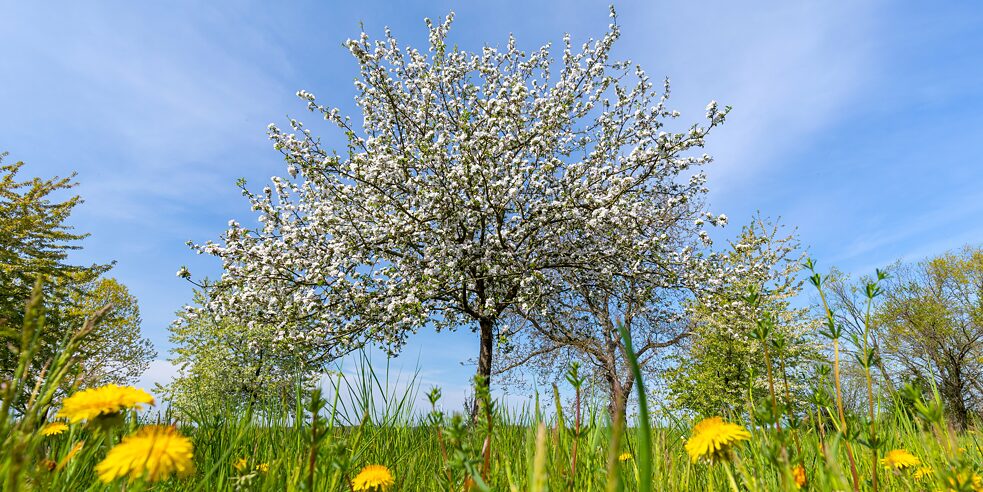Sustainable Towns
Digital Villages, Green Towns

Germany’s most sustainable towns and cities rely on the participation of their residents. Quite a lot can be achieved even with comparatively few financial resources.
By Wolfgang Mulke
Bad Berleburg is arguably the largest small town in Germany, at least in terms of area. The municipality, with its 20,000 inhabitants, consists of 23 villages and covers 275 square kilometres. This spread over a large area has become a huge problem for the town’s administration. “We have to maintain an extensive infrastructure,” says Mayor Bernd Fuhrmann. In 2017, his treasurer ended up with empty coffers. A huge debt overload loomed on the horizon. Fuhrmann wanted to avoid bankruptcy and organised a residents' participation program. “What is our future? How do we consolidate the budget? And what should we do with the new opportunities” – these are a few of the questions put to the residents.
The town managed to turn the corner with a whole host of individual projects. For example, the “Digital Village” project that was developed in cooperation with the University of Siegen – this enabled the Sunday church service to be streamed from just one church to all congregations. Fuhrmann has also been promoting a species conservation project for years. In 2013 the largest land mammals, the almost extinct European bison, were released into the wild in the forested areas around Bad Berleburg . This was not only good for the bison, but also for tourism in the region. Every year several tens of thousands of visitors come to the “Wisent-Wildnis am Rothaarsteig” (Bison Wilderness on the Rothaarsteig) to – with a little luck – see the impressive animals live. “We can also do something for species protection in Germany,” emphasised the mayor.
 Threatened with extinction not too long ago, European bison are now luring tourists to Bad Berleburg.
| Photo (detail): © Adobe
Threatened with extinction not too long ago, European bison are now luring tourists to Bad Berleburg.
| Photo (detail): © Adobe
Local Agendas
Bankruptcy was averted. Bad Berleburg became a sustainable community, among other things, for strategic reasons and the town now wants to continue along this path with the help of 200 individual projects. These range from ecological management projects to high-quality educational programs and family-friendly jobs, all with the aim of becoming a leading health location. The town received the Deutscher Nachhaltigkeitspreis (German Sustainability Award) for small towns in 2020. This is financed by a consortium of companies, associations, research institutions and ministries and awarded in close consultation with the federal government. In addition, Bad Berleburg is working with a partner region in Tanzania on concepts for coping with climate change.
Germany signed the Agenda 21 action plan in 1992 and the United Nations Agenda 2030 plan in 2015, which set global goals for sustainable development. They call upon municipalities to implement their own local action plans. “Cities and municipalities have already started to show in a variety of ways how sustainable development can be organised in close cooperation with citizens and civil society,” explains Gerd Landsberg from the Deutsche Städte- und Gemeindebund (German Association of Cities and Municipalities). “They ensure that sustainability becomes tangible, because it directly affects the way people live their lives.”
In Germany, they are supported by the federal and the state governments of the Länder. The national strategy is currently focusing on using less space, lower energy consumption in the field of mobility and affordable living space for everyone. The governments of the Länder promote specific projects in the municipalities, many of which have in their own interest long been committed to sustainable development.
The Power of the Apple
The Bavarian town of Aschaffenburg is a good example of this, and its 70,000 inhabitants received the prize for medium-sized towns in 2020. The town and its surrounding environs have been working on sustainable projects in the region since 1995, as deputy editor-in-chief of the local daily newspaper Main-Echo, Stefan Reis, explained. It started with an initiative for wild orchards in the area that were threatened with extinction. The initiative wanted to preserve rare apple varieties in the area, and so gradually a network of producers, processors and also a regional apple market was formed. The orchards threatened with extinction became an economic factor.
 Rare varieties of apples, among other things, are being grown in wild orchards.
| Photo (detail): © picture alliance/Andreas Franke
The fact that everyone can participate – residents, businesses, organisations and administration – has been brought about by a sustainability advisory board. Ecological, social and economic aspects are discussed by the board in equal measure, as the coordinator of the Agenda 21 projects, Andreas Jung, emphasises: “We do not make any judgements here.”
Rare varieties of apples, among other things, are being grown in wild orchards.
| Photo (detail): © picture alliance/Andreas Franke
The fact that everyone can participate – residents, businesses, organisations and administration – has been brought about by a sustainability advisory board. Ecological, social and economic aspects are discussed by the board in equal measure, as the coordinator of the Agenda 21 projects, Andreas Jung, emphasises: “We do not make any judgements here.”
The campaign for the wild orchards resulted in other initiatives following suit, Reis recalled. The proximity to the financial metropolis of Frankfurt also plays an important role. The rural region attracts the big-city dwellers and the regionally oriented economy is a competitive tourism factor. The prize jury also highlighted a number of inner-city projects, for example for climate protection or cycling. Mayor Klaus Herzog intends to use the prize money of 30,000 euros to support electromobility.
Clean Traffic
Among the major cities, the northern German municipality of Osnabrück with 165,000 inhabitants was chosen as the most sustainable city. “Sustainable development has a long tradition in Osnabrück,” says Claas Beckord, who is responsible for the city’s strategic planning. The Local Agenda has actually been in existence since 1998. Initially, the focus was on environmental education, for example, in the Museum am Schölerberg. It was for this that Osnabrück received the UN Decade of Education for Sustainable Development Award in 2013. The city is now concentrating on reducing CO2 emissions. The “Climate Protection Master Plan” was developed for this: green spaces are being expanded, bicycle traffic is being made easier, the bus fleet is being electrified and motorized individual traffic is being pushed back.
 An electric bus in Osnabrück: Among other things, this city in the state of Lower Saxony was awarded the Sustainability Prize 2020 in the major-city category for its traffic concept.
| Photo (detail): © picture alliance /Ingo Wagner/dpa
An electric bus in Osnabrück: Among other things, this city in the state of Lower Saxony was awarded the Sustainability Prize 2020 in the major-city category for its traffic concept.
| Photo (detail): © picture alliance /Ingo Wagner/dpa